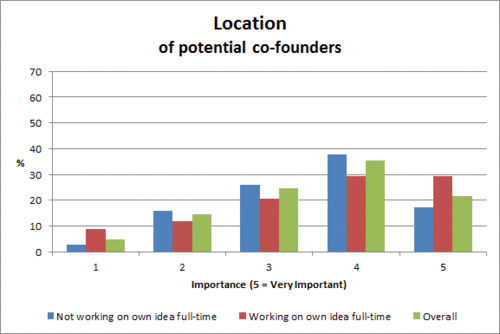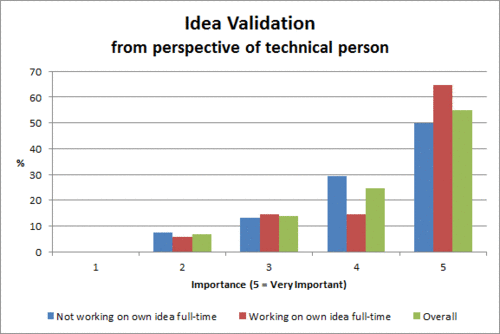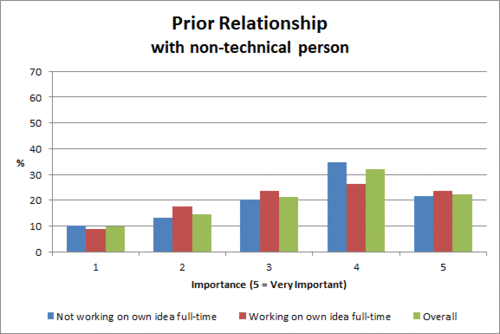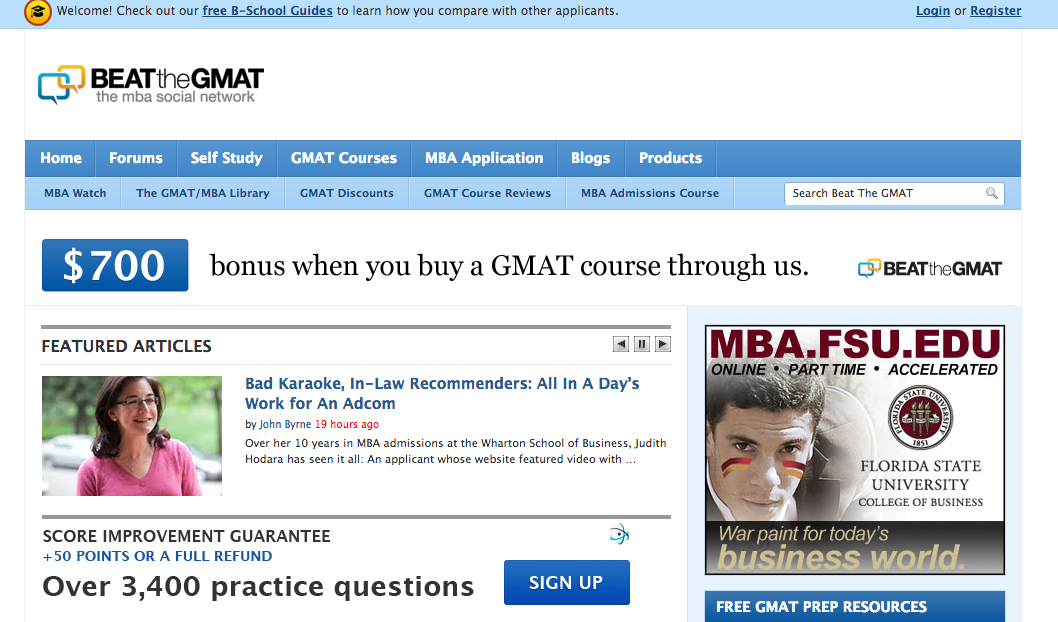Why you can’t find a technical co-founder (Guest Post)
This is a guest post by a friend of mine on email marketing. Elizabeth Yin is the CEO and a co-founder of LaunchBit, an ad network for email newsletters. Previously, she worked at startups and Google, and went to MIT for her MBA, and Stanford before that. PS. I’m training growth hackers. Email me.
image credit: SilentMode
Hey, I’ve got this great idea for a startup…do you know any developers who might be interested in working with me?
I get asked this question a lot. So, my co-founder Jennifer and I were curious and surveyed developers on what would compel them to team up with a non-technical co-founder.
The results were surprising. This survey was not particularly scientific. We received 104 submissions from developers, of which 35 were actively working on their own projects full-time and 69 were not. We asked participants to rate how important a particular criteria was to them in deciding whether to join a non-technical person’s startup. 1 = Not important. 5 = very important.
Location is not a deal-breaker
I would’ve expected location to be a deal-breaker for just about everyone. I would have expected all would-be technical founders to strongly prefer being in the same city as his/her non-technical counterpart. But, only about half said location was a deal-breaker.
Idea validation is extremely important
In contrast, idea validation was extremely important to potential technical co-founders. You, as a non-technical entrepreneur, are not selling a dream or the vision. You are selling traction. Some people who took our survey commented about their ideal proof of validation, “If they have $1M in sales and have shown that people are willing to buy this thing without it even existing.” Another mentioned, “Validated early adopters/customers [are people] who said they’re going to pay for the product when their minimum viable product is out for their use.”
Prior relationship is not a deal-breaker
Also interestingly, I would’ve expected developers to overwhelmingly prefer to work with people they’ve already worked with or know from before. And while, the data shows that many people would prefer to work with someone from their past, about 40% of technical folks don’t really care.
Pulling this all together, if you’re looking for a technical founder, the number one thing you should be doing is to get traction for your startup idea. This means validating your idea, getting customers or users, and ideally getting revenue.
Getting traction without a product
So how do you get traction without a developer to build the product? Very much in the spirit of the Lean Startup Methodology, there are a number of successful tech startups that got started without doing any programming. Here are 3 companies that took off without writing any code in the beginning.
Yipit
Fast-growing startup Yipit, a deals-aggregation company, got started in 2010 as a side project without any code. The founders, Vin Vacanti and Jim Moran, wanted to just get Yipit out the door in a couple of days, so in the beginning they manually aggregated deals from major daily deal sites — Groupon, LivingSocial, et al — by hand.
They put up a landing page to aggregate email addresses and collect category preferences. Then, they manually categorized each of the deals they collected and emailed their subscribers based on indicated preferences. In a the true spirit of hustling, they did not build a web crawler to aggregate the deals — they manually aggregated deals themselves at 3am everyday. As Yipit started getting traction, it was getting more unwieldy to handle, but instead of hiring developers to build out web scrapers, they hired more people to continue manually aggregating, categorizing and emailing deals for 9 months, because the Yipit team wanted to continue to learn how to tweak the product quickly to make it better. Since those early days, Yipit has since raised $7M+ in total.
Beat the GMAT
Beat the GMAT, a social networking site for prospective MBA students, started in 2005 as a side project — just as a blog. The founder, Eric Bahn, used his blog to solve his own GMAT problems to help him practice for the exam. His blog became so popular, readers started emailing him to ask for help on problems. Although Eric would email people back, he was soon receiving 50+ emails per day from blog readers. He realized he needed to scale himself. So, he replaced his blog with forum software so that readers could help each other.
However, the number of visitors to his site was not large enough to make the forums particularly lively or helpful. So, he continued personally answering a lot of people’s GMAT questions in the forums. He took this a step further — he wanted to wow his visitors with quick responses, so he made sure each posted question in his forums received a response within 1 hour. It turned out that a lot of prospective MBA students, however, lived in Asia, so he hired a contractor to call him whenever a prospective MBA student posted a question in his forums. This often required Eric to jump out of bed in the middle of the night to answer forum questions. But, a year into following this exhausting routine, Eric found that he had built up enough traffic in the forums, and other people were now responding to questions before he could even reach his computer.
The MBA community started clamoring for more, so the Beat the GMAT team decided to transform their forums into a full-fledged social networking site. Since the team wasn’t technical, they outsourced the development of their site to what it is today. Beat the GMAT bootstrapped its way to $1M+ in annual revenue with just 4 full-time employees and was acquired by Hobson’s in 2012.
AngelList
Founders Naval Ravikant and Babak Nivi had already been successful entrepreneurs by the time they started AngelList, a social networking site for angel investments. They had the resources to build out a huge site for AngelList, and they initially did, but they quickly found they had overbuilt and did not have users. So, they took a step back and dumped everything. They started again using a mailing list and Wufoo forms to hack together a community of entrepreneurs and angel investors. They asked both sides to fill out forms with information about their companies and investments. They manually brokered introductions between relevant entrepreneurs and investors.
Only once they started getting interactions going did they decide to build out the product that we see as AngelList today. “We always do it manually…until we know how it works and then we automate it,” explained Naval. Today, over 1000 startups have been funded on AngelList, and the company is rumored to be raising a first round of funding at $150M valuation.
The truth is — traction matters. And, if you’re a non-technical founder with just an idea, it’s probably tough to find a technical co-founder. Having traction on that idea will make it a world easier to find technical talent.
P.S. But, I know that figuring out how to get traction isn’t easy. So, I’m organizing a conference called Hustle Con (July 9 in Mountain View) to teach new entrepreneurs on how to get customers first. We’ll be talking about topics such as how to go from 0 to $5M in revenue and how to build an audience before you have a product. We have a great full line up of speakers including Scott Cook (founder of Intuit), Gagan Biyani (co-founder of Udemy), Jess Lee (CEO of Polyvore), and Arjun Arora (CEO of Retargeter) who will share how they acquired customers. And, I’m giving away one free ticket on this blog. All you have to do is tweet why you want a @hustlecon ticket before June 27th, and the best tweet will win. For those who don’t win, get 25% off with this discount code: “andrew-hustler”
PS. Get new updates/analysis on tech and startupsI write a high-quality, weekly newsletter covering what's happening in Silicon Valley, focused on startups, marketing, and mobile.
Views expressed in “content” (including posts, podcasts, videos) linked on this website or posted in social media and other platforms (collectively, “content distribution outlets”) are my own and are not the views of AH Capital Management, L.L.C. (“a16z”) or its respective affiliates. AH Capital Management is an investment adviser registered with the Securities and Exchange Commission. Registration as an investment adviser does not imply any special skill or training. The posts are not directed to any investors or potential investors, and do not constitute an offer to sell -- or a solicitation of an offer to buy -- any securities, and may not be used or relied upon in evaluating the merits of any investment.
The content should not be construed as or relied upon in any manner as investment, legal, tax, or other advice. You should consult your own advisers as to legal, business, tax, and other related matters concerning any investment. Any projections, estimates, forecasts, targets, prospects and/or opinions expressed in these materials are subject to change without notice and may differ or be contrary to opinions expressed by others. Any charts provided here are for informational purposes only, and should not be relied upon when making any investment decision. Certain information contained in here has been obtained from third-party sources. While taken from sources believed to be reliable, I have not independently verified such information and makes no representations about the enduring accuracy of the information or its appropriateness for a given situation. The content speaks only as of the date indicated.
Under no circumstances should any posts or other information provided on this website -- or on associated content distribution outlets -- be construed as an offer soliciting the purchase or sale of any security or interest in any pooled investment vehicle sponsored, discussed, or mentioned by a16z personnel. Nor should it be construed as an offer to provide investment advisory services; an offer to invest in an a16z-managed pooled investment vehicle will be made separately and only by means of the confidential offering documents of the specific pooled investment vehicles -- which should be read in their entirety, and only to those who, among other requirements, meet certain qualifications under federal securities laws. Such investors, defined as accredited investors and qualified purchasers, are generally deemed capable of evaluating the merits and risks of prospective investments and financial matters. There can be no assurances that a16z’s investment objectives will be achieved or investment strategies will be successful. Any investment in a vehicle managed by a16z involves a high degree of risk including the risk that the entire amount invested is lost. Any investments or portfolio companies mentioned, referred to, or described are not representative of all investments in vehicles managed by a16z and there can be no assurance that the investments will be profitable or that other investments made in the future will have similar characteristics or results. A list of investments made by funds managed by a16z is available at https://a16z.com/investments/. Excluded from this list are investments for which the issuer has not provided permission for a16z to disclose publicly as well as unannounced investments in publicly traded digital assets. Past results of Andreessen Horowitz’s investments, pooled investment vehicles, or investment strategies are not necessarily indicative of future results. Please see https://a16z.com/disclosures for additional important information.







